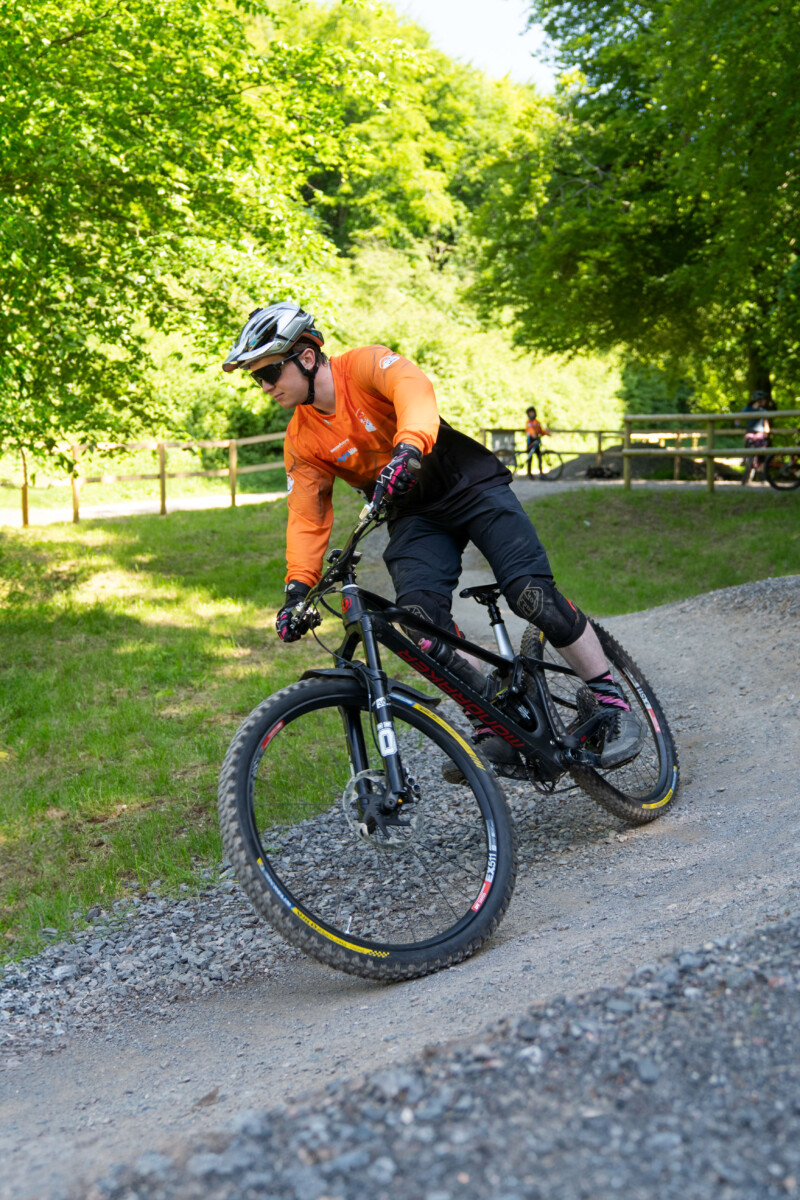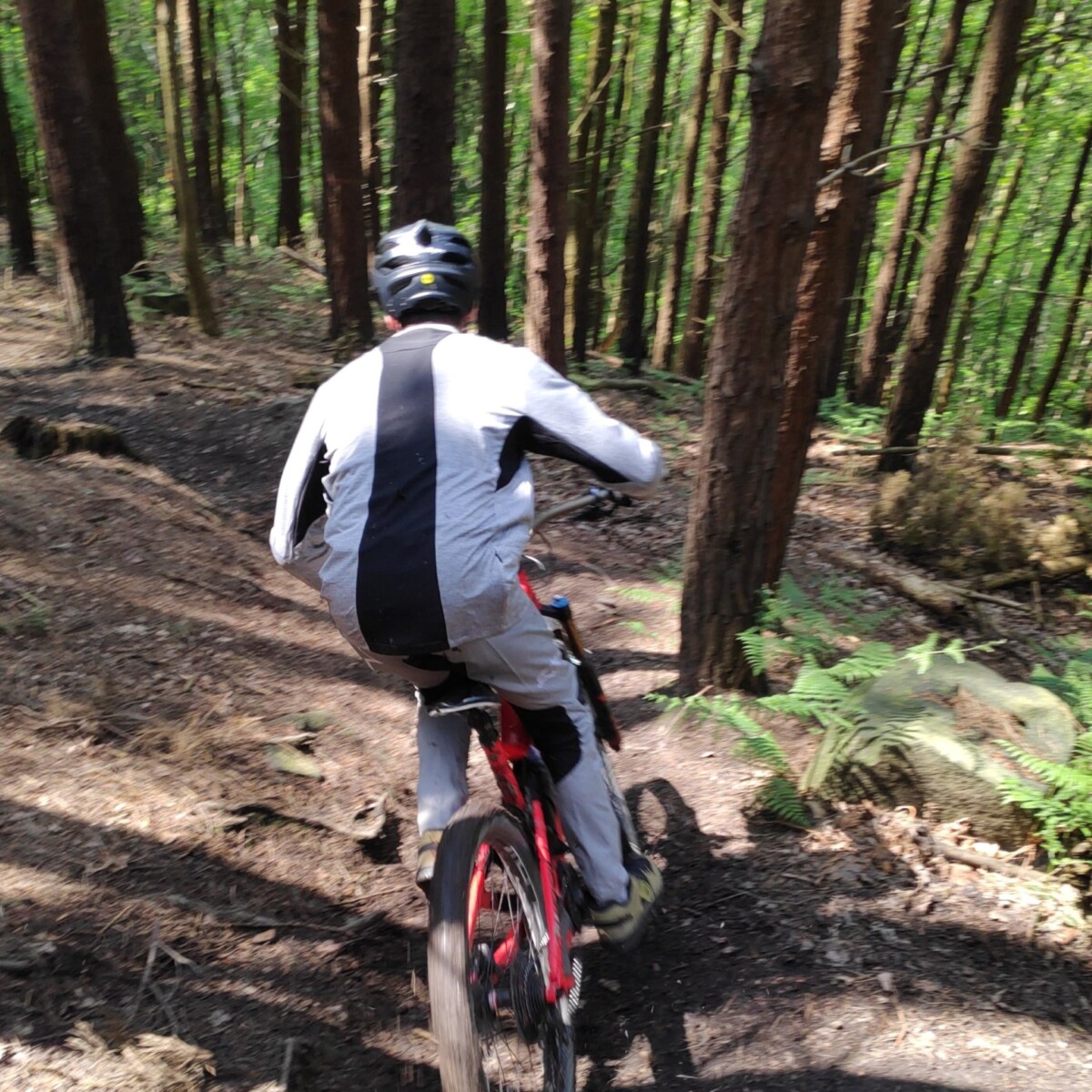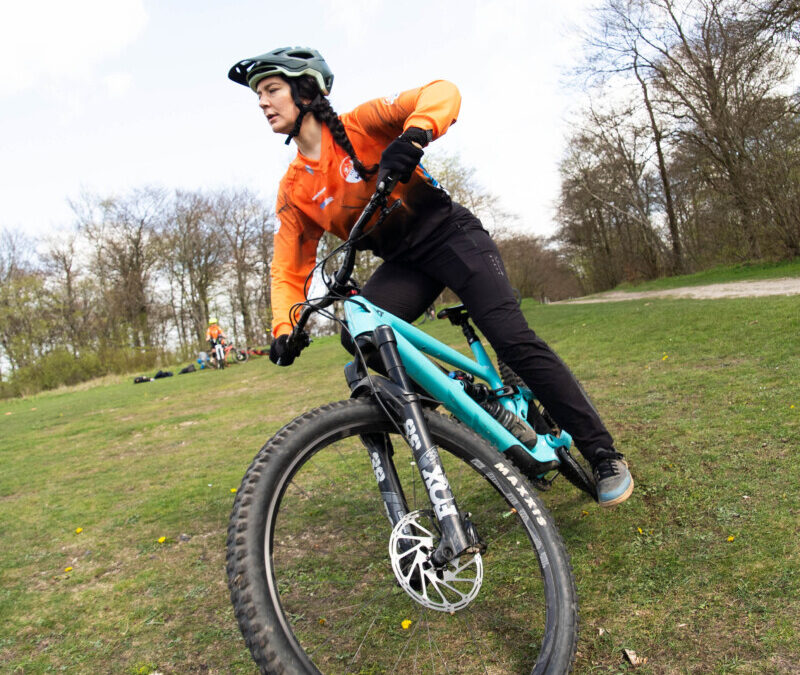Michael Guilford specialises in coaching gravity focused mountain bikers, preparing them for Downhill & Enduro races.
Many mountain bikers head straight for steep, technical trails—only to find their cornering confidence and speed don’t improve. One of the biggest reasons is skipping the basics.
If you want to ride steep corners smoothly and with control, you need to know when to release the brakes, let the bike roll, and trust your technique. The secret? Start small, build your skills in a safe environment, and then progress to harder trails.
In this guide, Michael shares a simple cornering progression he uses with downhill & enduro riders to help them gain speed, control, and confidence when descending.
Why Cornering Skills Are So Important in MTB

Cornering is one of the most important MTB skills because it affects your flow, speed, and confidence on trails. Poor technique often leads to braking too much, sliding out, or feeling unstable in turns. By practicing step-by-step, you’ll learn to trust your tyres, stay balanced, and carry speed safely.
Step 1: Practice MTB Cornering on Easy Gradients
Before hitting steep terrain, start on a slope with just enough gradient to roll without pedalling.
· Find a mellow hill – Avoid steep sections where heavy braking is needed.
· Set up wide turns – Focus on smooth control instead of speed.
· Aim for no braking – Gradually work towards rolling turns without touching the levers.
MTB Cornering Technique Tips:
· Stay centred on the bike – Keep weight balanced between both wheels, hips over the middle. Stay soft through arms and ankles so the bike can move beneath you. But keep your pedals level & avoid bending your legs more than your arms.
· Bend your arms – bending your arms before the turn will help to initiate the turn.
· Take wide lines – Wider turns increase grip and stability.
· Turn your head – Your bike follows your head, so always look where you want to go.
· Pump the turns – As you gain speed, you can use a subtle pumping technique to apply pressure for grip and control. (this is why you need to have pedals level)
👉 These simple mountain bike cornering drills are enough to make a big difference—don’t overcomplicate it.
Step 2: Progress on Supported Corners – Pumping & Maximal Braking
Once you’re confident on easy gradients, move to trails with more gradient and supportive berms.
· Pumping technique – Pump through corners to gain grip and exit with speed. This teaches you to apply pressure at the right point. · Maximal braking – Instead of dragging brakes (which ruins flow), brake hard at safe, supported spots, then release and roll smoothly through the turn.
💡 Pro Tip: Practice both skills on flat ground first, then apply them on the trail.
Step 3: Apply Your Cornering Skills on Steep & Technical Trails
Now it’s time to use your skills on the steeps. This stage can feel challenging, but remember the foundations:
· Keep your body centred
· Release the brakes and let the bike roll
· Pump through corners for grip and speed
· Choose wide entry lines for more stability
It may take several attempts to feel comfortable, but consistency is key.

Key Takeaways: How to Improve Your MTB Cornering Skills
The most common fault in progressing cornering technique is overcomplicating the body movement. Most people need to focus on bending their arms more & being stiffer through their legs. This helps to apply pressure in the centre of the turn, using grip from both tyres effectively.
· Start on mellow terrain before tackling steep trails
· Stay centred and balanced over the bike
· Use wide lines for grip and flow
· Pump corners to generate control and speed
· Use maximal braking, not constant dragging
Progress takes time, but with regular practice, your cornering will become smoother, faster, and far more controlled.
Ready to Improve Your MTB Cornering Technique?
If you want faster progression and personalised feedback, a mountain bike coaching session can help you refine your technique and build confidence. 👉 Book a Technical Descending Skills Session in Sheffield

